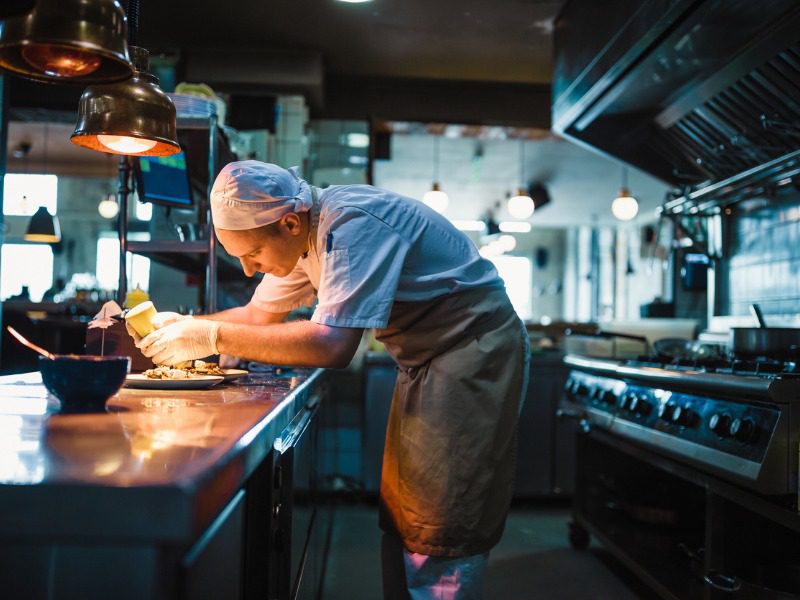Why the hospitality hard market won’t end in 2024

Persistent labour shortages, forecasted lower levels of travel, elevated inflation and rising property insurance rates will threaten the hospitality industry’s profitability in 2024, Hub International predicts in its 2024 Outlook series.
Yet, with prolonged periods of government mandated shutdowns, low customer engagement during the pandemic, and an increase in property Cat risk, the need for comprehensive insurance solutions is increasingly apparent.
That said, there are ways restaurants, resorts, and hotels can strengthen their risk mitigation, or even consider alternative risk transfer options, to find themselves viable in the new year.
The forecast
More than two-thirds of hospitality executives that responded to Hub’s Outlook survey cited increased business expenditures as a threat to profitability in the coming year. In total, the survey polled 900 business leaders across corporate, risk, human resources and education/non-profit functions from companies in 11 sectors in Canada and the U.S.
At the same time as increased business expenditures, consumers are predicted to cut their spending. Business travel has yet to return to pre-pandemic levels, and 2024 inflation could reduce the post-COVID demand for leisure travel, Hub predicts.
Not to mention, travel is still trending lower than it was pre-pandemic. In July 2023, 867,700 overseas residents arrived in Canada — up 39.7% from 621,300 in July 2022 — yet only reaching 79.0% of the overseas arrivals recorded prior to the pandemic in July 2019, according to Statistics Canada.
In addition, the escalating frequency and severity of weather events nationwide is driving up property insurance rates, creating additional financial burden for clients.
“Underwriters are scrutinizing properties like never before,” Hub’s Outlook reads. “From analyzing historical wind and extreme heat patterns to evaluating brush exposure, restaurants, hotels and resorts will need strong risk management programs if they hope to get a favourable renewal in 2024.”
This scrutiny is reflected in insurance rates, with property insurance premiums predicted to increase by 20% to 30% for lower risk profiles, and rates in high-risk Cat zones rising as much as 50% to 100%.
“Properties in high-hazard zones may struggle to find coverage with only a few carriers in the non-admitted market willing to write new business in this area,” Hub’s rate guide reads.
Plus, carriers are decreasing capacity on total insurable value (TIV) per location and increasing deductibles and loss limits.
Not to mention, liability insurance will be harder to attain without increase in 2024.
Over-serving incidents are driving up the cost of liquor liability coverage, with rates expected to rise 11% to 20% upon renewal. Excess liability insurance is expected to increase as much as 20%, and large resorts, hotels and restaurant chains will struggle to find sufficient limits from a single insurer, Hub predicts.
“Rates are stabilizing for much of the industry, but many restaurants, hotels and bars with exposure to liquor may still need to seek coverage options from the non-standard market. Businesses operating in [regions] with dram shop laws [i.e. business liability upon over-serving alcohol], or those with high claims activity or increased exposures (i.e., nightclubs) will face high rate increases and underwriting pressure at renewal,” the rate guide reads.
In general liability, the hospitality industry can expect flat to single-digit (10%) rate increases, with tightened terms and conditions. Carriers are increasingly adding sublimits for assault and battery.
The solution
It’s evident capacity will not be readily available to all hospitality risks upon renewal. With Cat risk increasing, and more liability claims abound, hospitality clients will have to prove they are a good risk to insurers, Hub predicts.
“Improved risk management, facility maintenance and worker wellbeing will serve the hospitality sector well,” the brokerage wrote.
With increased scrutiny of property Cat risks, hospitality companies will need to ensure their facilities are well-maintained and exceed safety standards.
“These actions include upgrading windows and roofs, and adding weather and disaster modelling, which will make facilities less vulnerable to wildfires and storms and may reap rewards at renewal.”
For example, Hub shared an example of a client that opened a new facility. “It invested in sophisticated flood mapping and made modifications to create a building strong enough to withstand hurricanes. The effort also resulted in a financial payoff: An annual $25,000 discount on property insurance for their efforts.”
Yet, those with Cat loss history might still be hard-pressed to find proper coverage. Alternative risk transfer solutions may be of benefit to those in risk-prone regions.
“Resorts, hotels or restaurant chains with positive loss history — particularly those located in Cat-prone areas — may benefit from joining a captive,” Hub wrote. A form of self-insurance, the idea is that a captive can provide insurance coverage that would otherwise be too difficult to obtain.
Regardless of which measures they take, hospitality businesses should consult a broker before renewals. “It will demonstrate to underwriters a commitment to risk reduction and that the company has plans for mitigating potential exposures, giving it the best opportunity to secure coverage at the best terms and prices,” said Hub.
Feature image by iStock.com/NoSystem images



